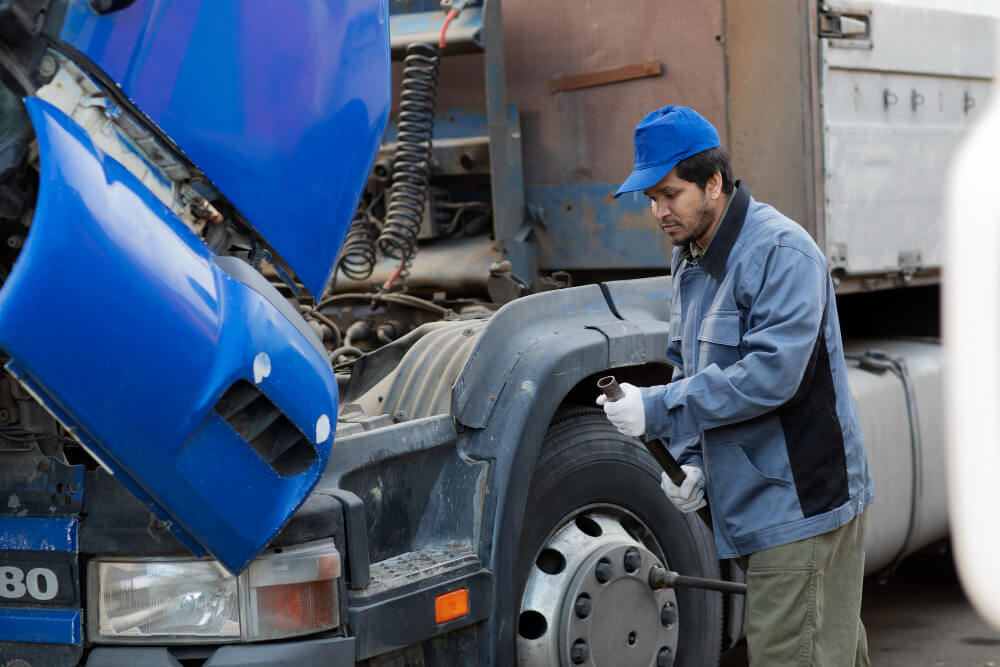As of 2021, there are over 160 million registered trucks in the United States. These trucks serve a variety of purposes, from commercial use to public transportation and personal hauling. They’re essential for transporting goods, services, and people across the country, making them a vital part of society. (1)

On the flip side, trucks also pose a significant collision risk because of their large size and long stopping distance. Compounded by the long hours that truck drivers often work, which can lead to driver fatigue, these factors make truck accidents a serious concern.
Truck Accident Liability
Determining liability is a complex process that requires a thorough investigation and analysis of various factors. These accidents often result in injuries because of the weight and size of trucks.
Truck accident cases can involve multiple parties, extensive evidence, and intricate legal theories. Looking for lawyer specialized in truck accident cases can help you navigate the legal process, gather and analyze evidence, negotiate with insurance companies, and advocate for your rights in court if necessary. They have the knowledge and resources to effectively handle these types of cases.
Dealing with the aftermath of a truck accident can be overwhelming, especially when trying to recover from injuries and manage mounting medical expenses. An experienced truck accident lawyer can take the burden off the victim and their family by handling all aspects of the legal case, from investigating the accident and gathering evidence to negotiating with insurance companies and litigating in court if necessary.
Negligence and Duty of Care
In most truck accident cases, liability hinges on establishing negligence. Negligence occurs when a party fails to exercise reasonable care or violates their duty of care, resulting in harm or injury to others. Both truck drivers and trucking companies have a duty of care to operate their vehicles safely and comply with federal and state regulations.
Driver negligence is a common factor in vehicular accidents. Some examples of driver negligence are:
- Distracted driving (texting, eating, or adjusting vehicle controls)
- Fatigued or drowsy driving
- Driving under the influence of drugs or alcohol
- Speeding or reckless driving
- Failure to yield or obey traffic signals
Trucking companies can also be held liable for accidents caused by their negligence. This may include:
- Failure to properly maintain vehicles
- Inadequate driver training or supervision
- Encouraging or pressuring drivers to violate hours-of-service regulations
- Improper cargo loading or securement
Depending on the circumstances, the truck driver, trucking company, cargo loader, and vehicle or parts manufacturer could all be held responsible.
Accident Scene Evidence
Preserving and analyzing evidence from the accident scene is crucial in determining liability. This may include skid marks, debris patterns, vehicle damage, and eyewitness accounts. Prompt investigation and documentation of the scene are essential before evidence is lost or compromised.
Accident scene evidence can provide valuable insights into the events leading up to the crash, as well as the forces involved and the actions of the drivers. Skid marks, for example, can help reconstruct vehicle speeds and braking patterns, while debris patterns can indicate the trajectory and impact points of the vehicles.
Electronic Data
Modern commercial trucks are equipped with electronic logging devices (ELDs) and other data recorders that can provide valuable information about the driver’s actions, speed, and braking patterns leading up to the accident. This electronic data can serve as crucial evidence in establishing liability.
Electronic data from the truck’s onboard systems can paint a detailed picture of the driver’s behavior and the vehicle’s performance in the moments before the accident. ELDs track the driver’s hours of service, which can reveal instances of fatigue or violations of rest period regulations. Data recorders can also capture information about the truck’s speed, acceleration, and braking, which can help determine if the driver was operating the vehicle in an unsafe manner.
Maintenance and Inspection Records
Trucking companies are required to maintain detailed records of vehicle maintenance, inspections, and repairs. These records can help determine if the company fell short in maintaining the truck, contributing to the accident. Obtaining and reviewing these records is a critical step in the investigation process.
Maintenance and inspection records can reveal if the truck involved in the accident had any known mechanical issues or defects that should have been addressed. If these records show that the truck company neglected to perform necessary maintenance or repairs, it could be evidence of negligence on the part of the company.
Potential Compensation
Depending on the circumstances of the case, victims of truck accidents may be eligible for compensation on lost wages, medical expenses, property damage, and in cases of wrongful death, funeral expenses and loss of future income. A skilled lawyer can fight to ensure you receive the maximum compensation you deserve for your injuries and losses.
Conclusion
Determining liability in a truck accident case requires a careful examination of the facts and evidence surrounding the accident. By understanding the various factors that can contribute to truck accidents, you can better navigate the legal process and ensure that those responsible are held accountable for their actions.
Reference:
- ‘Truck Accident Statistics For 2024.’ Source: https://www.forbes.com/advisor/legal/auto-accident/truck-accident-statistics/



